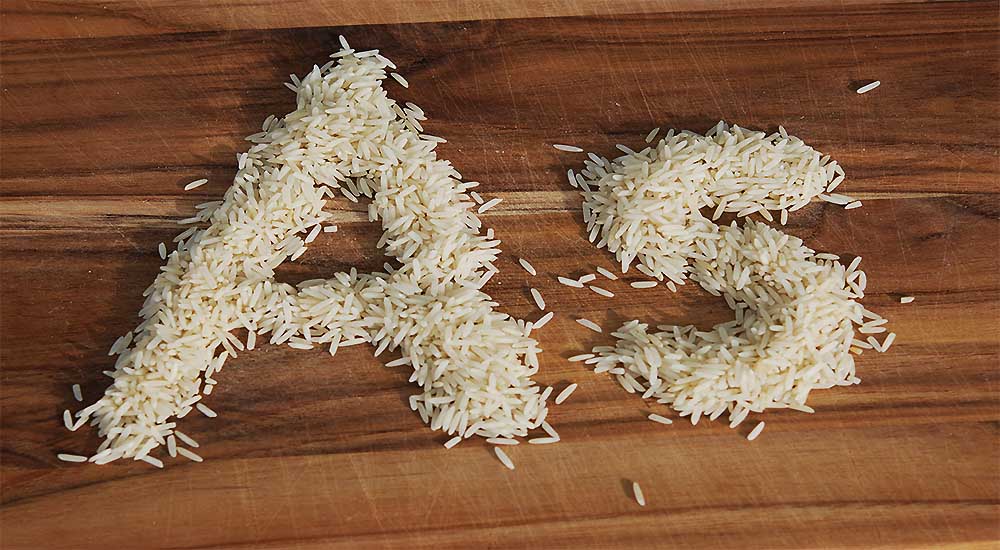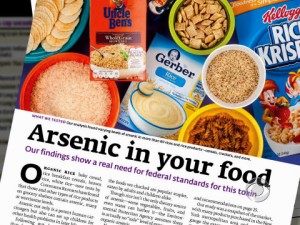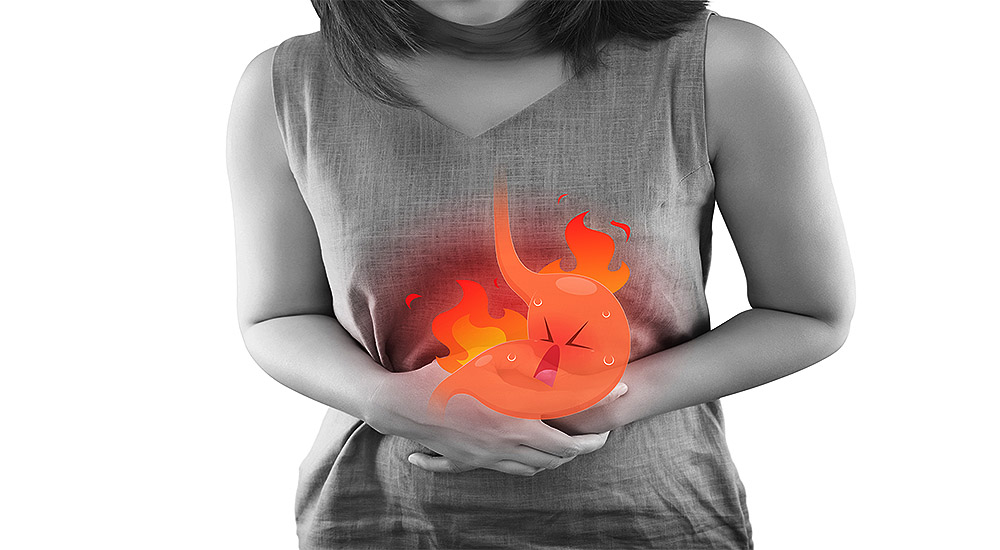Arsenic in your Rice?

Is Rice Truly Dangerous to Eat?

Hearing that it potentially has a toxicity problem is not good news. But don’t throw out that rice cooker just yet. Let’s look at some facts.
Rice is grown in water and the grain has a high affinity for arsenic found in water. It’s just a characteristic of the grain. Is arsenic bad for you? In high amounts it definitely is toxic and according to the FDA, long-term exposure to high levels of arsenic is associated with increased rates of skin, bladder, and lung cancers, as well as heart disease.
In children, high levels are known to lower IQ and hinder intellectual function. Do notice the bold above –” long term exposure to high amounts”. That is what needs to be determined.
Does the amount of rice that you or your family is consuming equate itself to high amounts that will have an adverse effect on your health? Or, an equally important question: Are the small amounts that are being ingested enough to accumulate in the body over time to create health problems?
Arsenic is measured in parts per billion – ppb. The federal limit for arsenic in drinking water is 10 ppb but no limit yet exists for arsenic in food.
In a recent Consumer Reports study, 200 plus rice products from the US were analyzed for arsenic. Of the 200 products at least 10 of them contained between 5 and 10 ppb of arsenic. Of course on the plus side, 190 of them contained less than 5 ppb – so they were safer than tap water.
Arsenic is readily found in nature from natural sources such as volcanic eruptions and rocks, as well as less natural sources including pesticides and ore smelting contamination. As a naturally occurring element, eliminating all arsenic in our food system is likely impossible and hopefully unnecessary when levels are small.
You may remember reports of arsenic last year in apple juice. It turned out that it was a problem with apple juice made from concentrate that, of course, concentrated the amount of arsenic. This wouldn’t be the same as eating an apple grown in the US or making juice out of it. I would like to add that I’m an advocate of ‘eating’ your fruit rather than drinking it, which would take this problem ‘off the table’ as it were. There are organic arsenic and inorganic. It is the inorganic type that poses more health problems should you ever see a distinction made when you are reading up on it. The Consumer Reports study found levels of arsenic 44% higher in Latino and Asian populations who tended to consume rice most often. Brand by brand comparisons of arsenic levels can be deceiving because within a single brand the levels will change depending on the soil and the time of harvesting. Therefore just because a certain brand looked better than another in one sample, doesn’t mean that will hold up in another sample.
Why Children are More at Risk than Adults
A pharmacist I know who is a biochemical genius said that she recommends that parents of small children forego the more refined rice products such as rice milk, rice cakes, rice bars, and rice containing baby foods.
These highly refined rice products were found to have higher amounts of inorganic arsenic than good old-fashioned cooked whole grain rice. And definitely avoid products with rice syrup, which was found to have quite high levels of arsenic on a consistent basis.
There are some things you can do to lessen your exposure to arsenic while still enjoying your rice.
1. Find out where the rice is grown. Rice hailing from Thailand (Thai jasmine) and India (Indian basmati) had some of the lowest levels found – ½ to 1/3 of the amount of American rice.
2. Within the US, the southeastern states grow, unfortunately, rice with some of the highest amounts of arsenic. The problem with the southeast is that cotton was previously grown on the same land and arsenic was used as a pesticide. Even though arsenic is no longer used as a pesticide, its presence can still be found in the soil that now grows rice. Rice grown in California is a much better bet due to not having arsenic-laden soil.
3. Unfortunately, the nutrient-laden brown rice has higher arsenic levels than its white counterpart. The polishing process that white rice undergoes removes the surface layer, or bran, of the grain providing a reduction in the arsenic level. One report cited the bran to have 10 to 20 times higher amounts of arsenic than the remaining grain.
4. Happily, one nice fix is quite easily accomplished. Wash the rice before cooking it and then cook it in extra water (4:1 or 6:1 ratio)– pour this water off before serving. According to Consumer Reports, this process can remove about 30% of the arsenic. Yay!
5. Variety is the spice of life. Just the way I encourage my patients to eat a broad array of fruits and vegetables, so too should you consume variety in your grains. For those eschewing gluten, there are still such grains and starches as quinoa, amaranth, buckwheat, tef, potato, millet, etc. Try some new grains. Fortunately, none of those mentioned have any predisposition to take up arsenic.
6. Organic rice vs. inorganic? While you would hope that organic would provide some benefit, that has not necessarily been found to be the case as regards arsenic levels. More research needs to be done, although it intuitively makes sense that if the arsenic content of rice is predicated on what’s in the soil then organic rice should be less of a problem. We’ll just have to see as more research occurs.
7. Lastly, young infants and children are likely more at risk than adults. Why? The detoxification pathways by which the adult body rids itself of arsenic are not developed adequately to perform that function in young children. It’s unfortunate that the standard rice cereal that most infants transition into as their first food might be problematic. One study recommended only one serving per day of rice cereal for infants. And definitely avoid brown rice syrup that is found in many children’s treats – the arsenic in that product was found to be high consistently.
How do you Know if Your Body is Getting Rid of Arsenic?
As mentioned above, as long as you’re not an infant, your body possesses detoxification pathways designed to rid itself of arsenic and other potentially toxic substances, including lead and mercury. Therefore, a moderate amount of whole grain rice consumed by a body that is able to detoxify, shouldn’t result in any long-term health problems.
If you want to know how your detoxification pathways are working, or if you have any elevated levels of toxic substances including arsenic, lead, mercury, aluminum, etc, feel free to contact our clinical nutrition department.
Do you need help with your health?
We have the diagnostic and testing tools, the clinical experience, and a different medical approach to discovering the root cause of why you have the symptoms that are bothering you. As long as you are ready to make some dietary and lifestyle changes, we can help you. We will "hold your hand" through the changes, step by step, to make each step an easy one. We are located in Clearwater, FL, at 1000 S Ft Harrison, at the corner of Ft. Harrison Ave. and Magnolia St. There is plenty of parking space directly accessible from Ft Harrison. If it is not convenient for you to come to Root Cause Medical Clinic, we offer telehealth/telemedicine consultations to residents of certain states. Call us for details.
Contact us for a Consultation – Call 727-335-0400

Dr. Vikki Petersen DC. CCN
Founder of Root Cause Medical Clinic
Certified Functional Medicine Practitioner
Dr Vikki Petersen is a public speaker, author of two books, several eBooks and creates cutting edge content for her YouTube community. Dr Vikki is committed to bringing Root Cause Medicine and its unique approach to restoring health naturally to the world.
Ask a Doctor
Have a health concern you'd like to speak with a doctor about? Or just want clarity on a subject? Ask Us!


